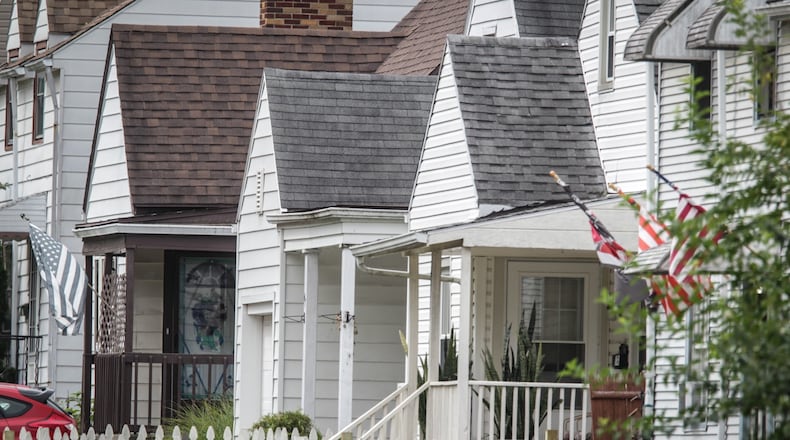Both surpassed the all-time high figures reached in June.
One of the things driving home sales prices up is increased demand, according to Sham Reddy, 2020 Dayton Realtors president and a realtor since 1992.
“People have realized, because of COVID, they need extra space in their houses,” Reddy said. “They’re going for the bigger houses. Unfortunately, the inventory is still (at an) all time low and that’s what’s causing the demand.”
That demand is personified by multiple offers and properties selling within 24 hours of listing, many of them with buyers overbidding for a home.
“Nobody’s bidding at the full price anymore,” he said. “They know it’s going to go higher and depending on the prices range of the house, I’ve seen properties that go anywhere from $5,000 over to $30,000 over the asking price.”
Credit: JIM NOELKER
Credit: JIM NOELKER
There have been challenges as a result, including taking the chance that the appraiser will value the property at a significantly higher level than the original asking price, Reddy said.
“Either (the buyer will) have to come up on the price with their own funds or the seller has to come down and in this market, sellers are not coming down,” he said.
If a sale doesn’t occur, a seller likely will simply put a home back on the market or take the second offer in line, Reddy said.
The increase in median price from $130,000 just two or three years ago to $180,000 last month left Reddy “flabbergasted,” he said.
Low supply also is boosting the price of homes, he said. Listings submitted in the month of July declined, with 2,011 entries, a 1.7 percent drop from July 2019′s 1,668, according to Dayton Realtors. For the January through July period, 11,481 listings were entered, down from last year by eight percent.
In general, the rise in average and median home sale prices has created an imbalance in the marketplace, one that is not good for buyers, Reddy said.
“If they pay $30,000 more for the property (to be the winning bid), it takes a while before the property can appreciate, and if the market ever adjusts in the next six months or a year, they might find themselves under water,” he said.
A factor in the increase in home sales and home sale prices is historically low interest rates, according to Tony Caporale, professor and chairperson at University of Dayton’s Department of Economics & Finance.
Because homes are an asset to homeowners, any increase to their value can lead to more spending, including when home owners tap into their home equity lines of credit to purchase items such as vehicles or other large purchases.
“It has sort of a positive ripple effect on the economy, Caporale said.
A negative effect of increase home sale prices is the increase in housing values and with it the property taxes for a home, he said.
But an increase in demand for homes, decreased inventory and higher home sale prices means home builders are more likely to increase construction, which in turn helps the economy via increased jobs and spending.
The Commerce Department reported last week that construction of new U.S. homes surged 22.6 percent in July as home builders bounced back from a lull induced by the coronavirus pandemic. Construction of new homes in the Midwest saw a whopping 58.8% increase.
The challenge, Reddy said, is the lag time for home construction, as it typically takes a home builder six months to turn a house.
“They’re not building enough to increase the supply,” Reddy said.
The 1,773 sales for July – up more than six percent – produced a cumulative sales volume of more than $366 million, an increase of more than 16 percent from last year, according to Dayton Realtors.
July’s showing also continued to improve the year-to-date numbers. The January to July average sales price increased over eight percent to $190,812, while the median price increased more than nine percent to $165,000. The cumulative sales price also jumped nearly five percent to $1.75 billion. The number of sales saw a three percent drop as a result of COVID-19 restrictions earlier in the year and lack of available homes on the market.
The Associated Press contributed to this story.
BY THE NUMBERS: JULY 2020 HOME SALES
6.29: percentage increase in sales in July 2020 compared to July 2019
$206,750: residential average price
$180,000: residential median price
SOURCE: Dayton Realtors
About the Author


